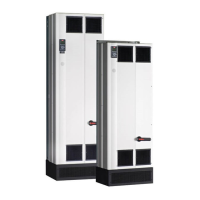7.3.3 Telegram Length (LGE)
The telegram length is the number of data bytes plus the
address byte ADR and the data control byte BCC.
4 data bytes LGE=4+1+1=6 bytes
12 data bytes LGE=12+1+1=14 bytes
Telegrams containing texts
10
1)
+n bytes
Table 7.3 Length of Telegrams
1) The 10 represents the fixed characters, while the n is variable
(depending on the length of the text).
7.3.4
Filter Address (ADR)
2 different address formats are used.
The address range of the filter is either 1–31 or 1–126.
1. Address format 1–31:
Bit 7=0 (address format 1–31 active).
Bit 6 is not used.
Bit 5=1: Broadcast, address bits (0–4) are not used.
Bit 5=0: No Broadcast.
Bit 0-4=Filter address 1–31.
2. Address format 1–126:
Bit 7=1 (address format 1–126 active).
Bit 0-6=Filter address 1–126.
Bit 0-6=0 Broadcast.
The slave returns the address byte unchanged to the
master in the response telegram.
7.3.5
Data Control Byte (BCC)
The checksum is calculated as an XOR-function. Before the
first byte in the telegram is received, the calculated
checksum is 0.
7.3.6
The Data Field
The structure of data blocks depends on the type of telegram. There are 3 telegram types, and the type applies for both
control telegrams (master⇒follower) and response telegrams (follower⇒master).
The 3 types of telegram are:
Process block (PCD)
The PCD is made up of a data block of 4 bytes (2 words) and contains:
•
Control word and reference value (from master to follower).
•
Status word and present output frequency (from follower to master).

